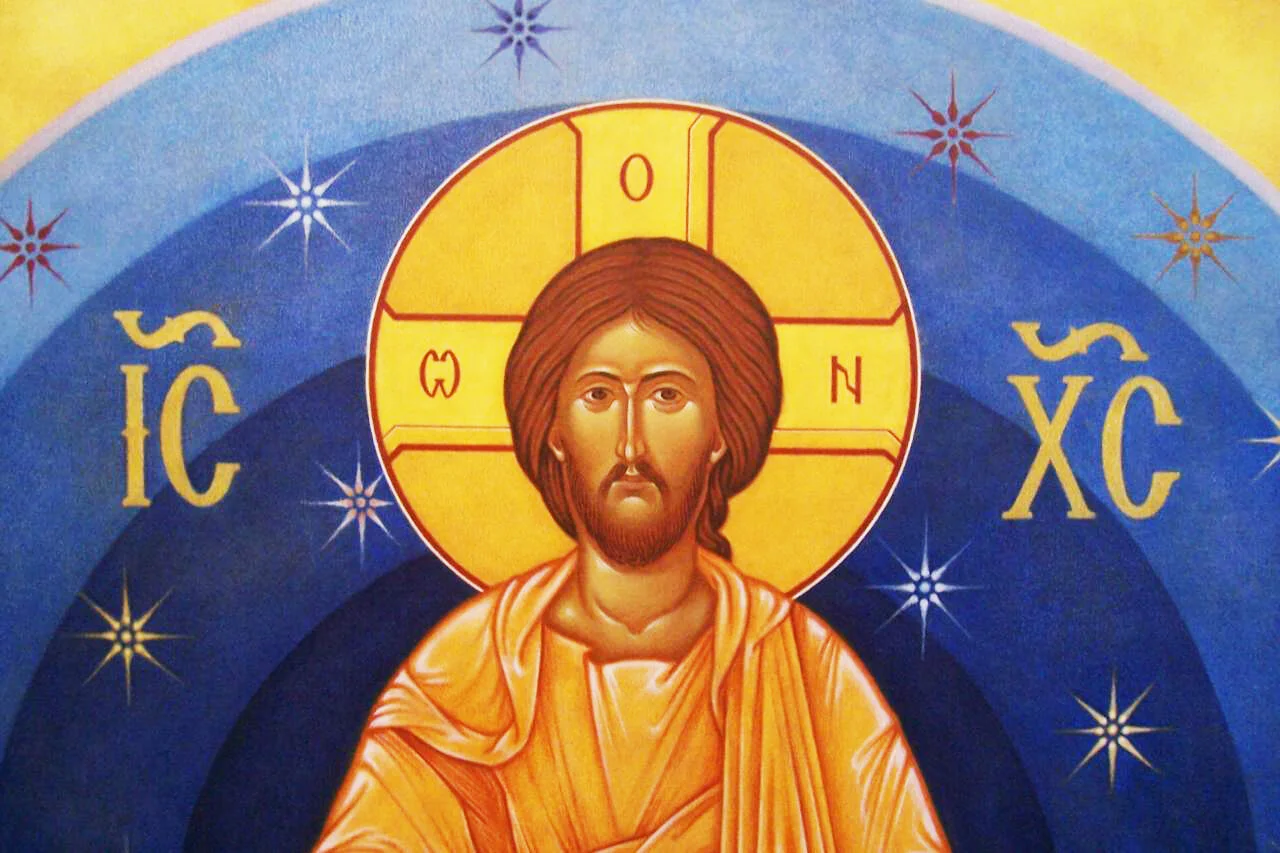by Fr Gabriel-Allan Boyd
This Sunday, we celebrate a bit of history…but if you’re smart enough to pay careful attention, what we’re celebrating is much more profound than mere history. This Sunday we celebrate our Church’s tenacious adherence to the truth that God’s Son (the Word, who was present with the Father and the Holy Spirit from before all time) came to be born from a woman—taking on material, human flesh. And since He became material, He could, also therefore, be depicted in a material image—an icon. And since our Lord’s incarnation sanctifies people who become unified with Him—other saints can also be depicted in images, reflecting Christ’s humble-glory. Relatedly, this means that the rest of creation can also be sanctified for the similar purpose of reflecting the Heavenly Kingdom’s beauty. God’s human image transforms the universe!
But in the Church’s history, there were some people who rejected this way of understanding God’s incarnation and our Lord’s depiction in icons. They were called Iconoclasts, a word that literally means icon-breakers—who engaged in a war on icons. These iconoclasts were a politically powerful and destructive bunch who, because they abandoned Christ’s sanctification of the material world and of its goodness and beauty in Him, they caused a great deterioration in what once was a thriving Church. In fact, it should be noted that these Icon-breakers’ removal of God’s image also had a destructive effect far beyond the Church. Since the devotees of this heresy so suppressed the development of any beauty that reflected Christ, it also had a corrosive effect upon the entire Byzantine Empire—upon its source of meaning, its culture, architecture, music, art, interpersonal relationships, community connectedness, and even its economy. For more than a hundred years, the iconoclastic Byzantine Empire struggled and diminished because the devotees of this heresy so suppressed the development of any beauty that reflected Christ. As with the devil and his demons, a heart of darkness cannot bear the presence of timeless-beauty, determined to bring corruption unto death upon any place where the beauty of God’s image might be found…doing everything in its power to destroy that holy image. So, it should be pointed out that rejecting God’s image in the world also alters everything in a way that has devastating consequences.
Finally, in the year, 843 A.D. (1,177 years ago), the Empress Theodora restored the Church to its rightful place, where we could once again venerate icons as a strong proclamation of what it meant for God’s Son to take on human flesh—when timeless beauty once again entered the world and began to fundamentally transform it. So, every year, we set aside the first Sunday of Great Lent—The Sunday of Orthodoxy—to celebrate that date and God’s radical materialism (sanctifying the material). It’s our participation in God’s timeless-beauty as being victorious over the distortion that brought the Church and the entire Byzantine Empire so low. We commemorate orthá-dóxa (right-glory) in its victory over heresy in 843 A.D. We commemorate the victory of light over darkness. And we commemorate the victory of beauty over barbarism.
But why does any of that matter to any of us who live in the 21st century? Is this merely the commemoration of a historical event that happened centuries ago? Does The Sunday of Orthodoxy have any significance for our lives now? Look around you. The battle to destroy the image of Christ in everything still rages. Darkness and evil never quit. They’re always at work—attempting to distort and eradicate God’s timeless beauty. Whether we like it or not…whether we choose to engage with it purposefully or not, a spiritual battle—a battle over our very souls is being waged against us. Demons, who seek to distort and tear-down the image of Christ in humanity are doing their utmost to necrotize the people around us into a perpetual state of decay. For the very neighborhood around our parish, even sometimes within the very hearts of the people who claim to be Orthodox Christians, the distortion of Christ’s image and the loss of beauty causes marriages to fail, dis-integrates families, motivates people toward addictions, cultivates mental and spiritual illness, and produces a general spirit of bitterness, isolation and meaninglessness.
Our living adherence to the timeless-beauty found within the person of Jesus Christ and maintained within His teachings—within His image being imprinted upon our hearts—is vitally important to our own personal wellbeing, to our families’ wellbeing and to our neighbors’ wellbeing. The beauty is seen in Jesus Christ—slain since before the foundation of this world (Revelation 13:8)—sacrificially offering Himself in a pouring out of His love, even to the point of death. And the only way we get to even begin to experience beauty in our own lives is when we become devoted to uniting ourselves with His image—dying to ourselves, so that He may be revealed to the world.
That means that the first step to becoming victorious in this battle against the destructive demonic armies of darkness is to acknowledge that there is a divine timeless-beauty of whom (in my image) *I* am not the measure. Timeless, life-giving beauty is much bigger than just ourselves—although, by God’s grace, we can participate in it. The first step to winning this spiritual battle—bringing about beauty inside us—is in realizing that a devotion to any other image outside of Christ’s leads people down the path to darkness and meaninglessness and dis-integration with each other.
This is why our Orthodox Church, in her wisdom, places this celebration of Christ’s image onto the first Sunday of Lent. It’s out of mercy…to remind each one of us of our desperate need to struggle to find and adhere ourselves to that timeless-beauty, found only in the image of Jesus Christ. It’s to extend to each one of us the invitation of Phillip in this Sunday’s Gospel reading (John 1:43-51). It’s the Church saying, ‘We have found the God/Man, Jesus Christ, whose very human image is life-giving.’ And when our cynical soul is tempted to wonder what good could possibly come from some religious character from Nazareth, then the Church says to our dismal, malfunctioning heart, “Come and see! Come to the collection of Lenten services…not in a passive way, but with purposeful participation…to engage with the prayers and hymns of the Church with the firm resolve of being transformed into the likeness of Christ. Come and see! Come and see if that doesn’t transform your marriage. Come and see if that doesn’t strengthen your family. Come and see if that doesn’t give you the tools you need to endure life’s storms. Come and see what happens when you strengthen your role as a disciple…an intimate follower…a student of Jesus Christ. Come and see!”
This Sunday, at the end of Divine Liturgy, we’ll have a procession where the children of our parish will be carrying icons. This procession will commemorate the implications of that point in history when God took on Human flesh (flesh that could be depicted in an image just like any of ours), that He sanctifies human flesh, and therefore also sanctifies all matter. This procession will commemorate that time when the Church once again became triumphant in its adherence to that image that brought light and beauty to a darkened and dis-integrating world. The Church invites you to become triumphant, also, by your adherence to having Christ’s image depicted on your heart…to become like Him in everything you are and do.
Thus, I implore you, for the sake of your own healing, that this Sunday of Orthodoxy becomes much more than a mere history lesson with some quaint religious nostalgia for you and our children. As we commemorate that date on which the Church once corrected the destructive effects of Iconoclasm, helping us to focus in on the implications of the timeless-beauty of our Lord’s life-transforming image—so also, let it correct the parts of your life that move away from and distort Christ’s image—so that you and those around you may instead become transformed toward life in Him. “Come and see!” Can our Lord’s beautiful likeness be depicted from within you? The Good News is, it can if you will. Let the triumph of Orthodoxy (right-glory), be a triumph of beauty over you and your family’s hearts.



